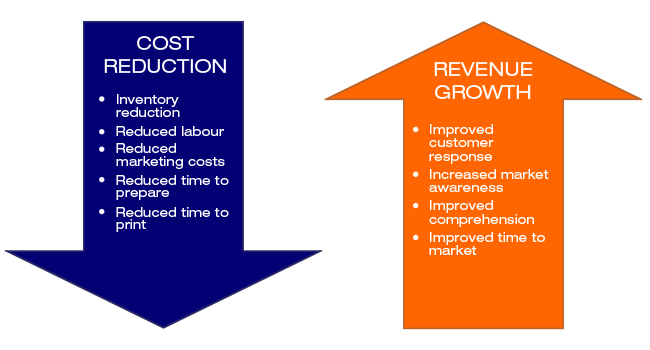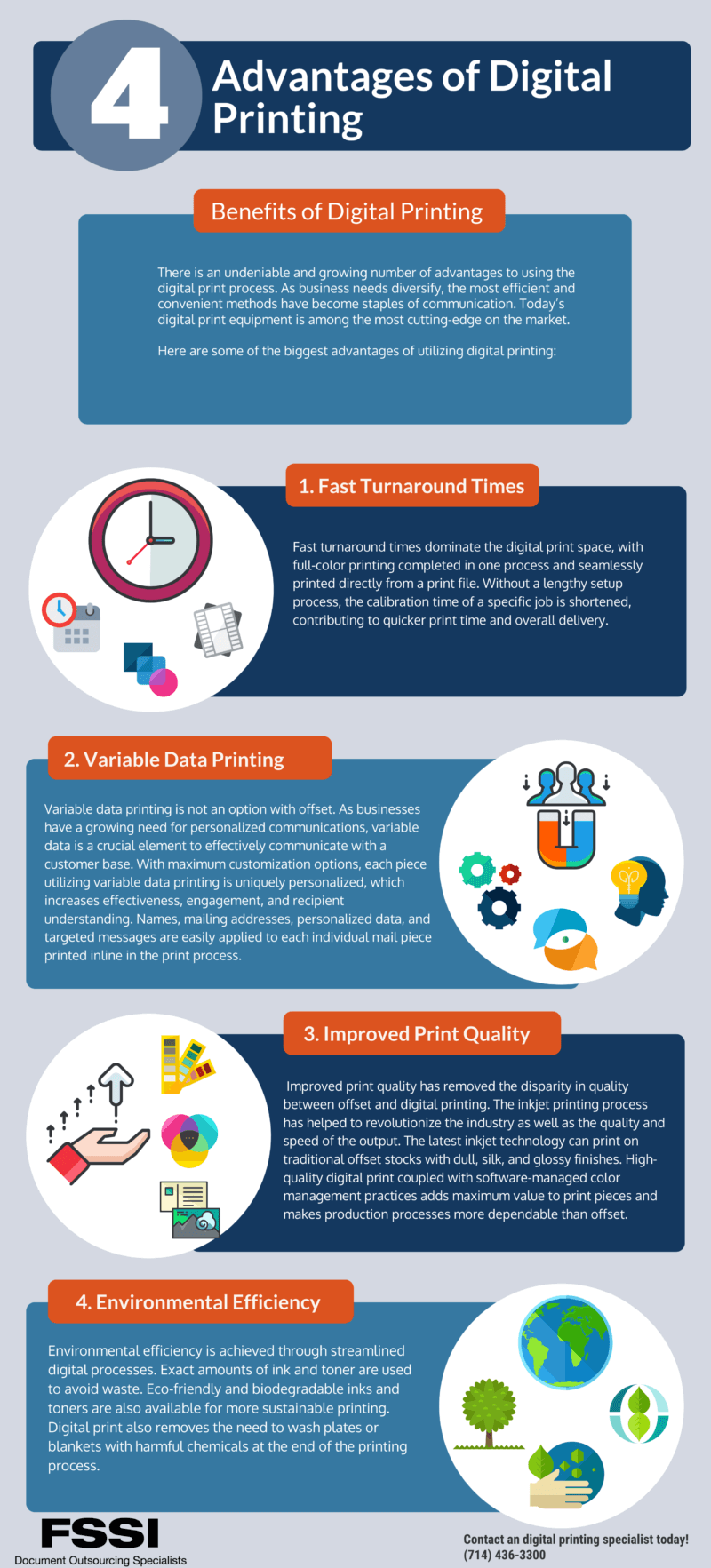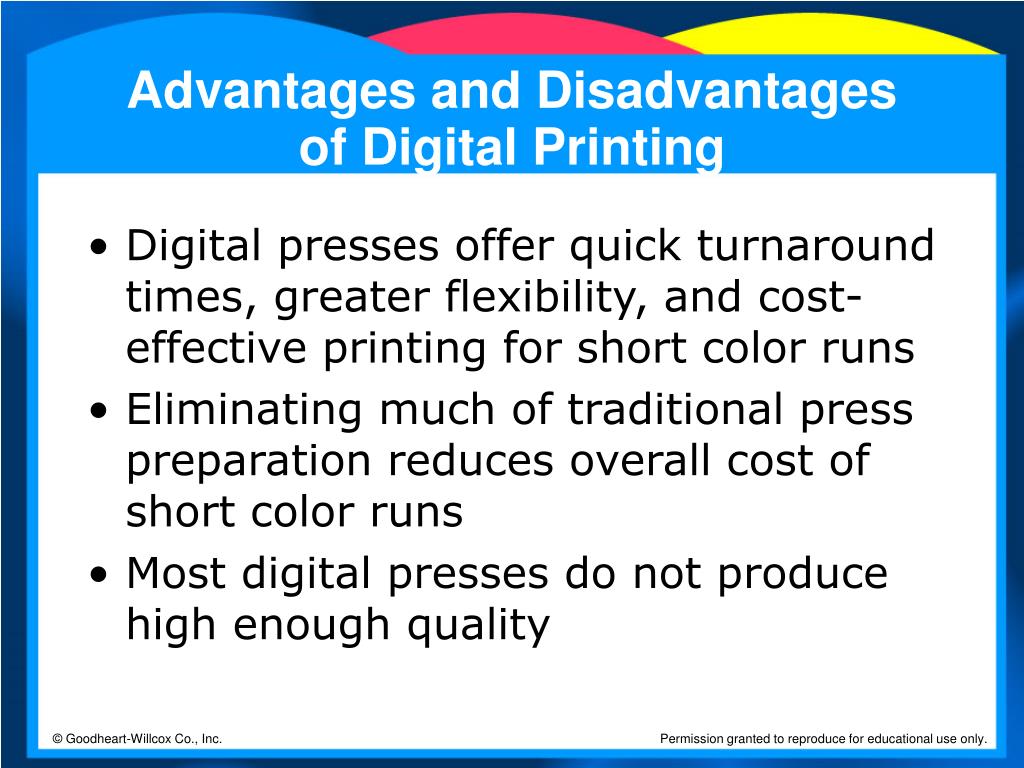What Does Digital Printing Do?
What Does Digital Printing Do?
Blog Article
Fascination About Digital Printing
Table of ContentsThe Single Strategy To Use For Digital PrintingHow Digital Printing can Save You Time, Stress, and Money.The Digital Printing StatementsNot known Details About Digital Printing An Unbiased View of Digital PrintingNot known Facts About Digital Printing
Variable data printing, such as straight mail with individualized codes and addresses, is ideally suited for digital printing. Digital quick printing just requires four steps of style, testimonial, printing and binding to get everything done. Digital quick printing has an exceptional advantage: print on need.According to PMMI, digital printing permits brands and manufacturers to react rapidly to customer needs while boosting the supply chain, lowering warehousing price and waste, and delighting in faster time to market. That all sounds great, yet just how does this technology do all that? The significant differentiator of these modern technologies is that there are no set-up costs and no plates with digital printing.
Getting The Digital Printing To Work
This results in quicker turn-around time and reduces price when making use of digital printing.
Digital printing is highly flexible, so it's simple to make modifications to the plan layout promptly. It all goes back to the plates.
With conventional printing approaches, short-run printing is just not possible. Because a great design can make or damage your item, digital printing consistently creates premium, clear and vibrant graphics each time.
Digital printing is the procedure of printing digital-based pictures straight onto a range of media substratums. There is no requirement for a printing plate, unlike with offset printing. Digital data such as PDFs or desktop computer posting files can be sent out directly to the digital printing machine to print on paper, picture paper, canvas, textile, synthetics, cardstock and various other substrates.
10 Simple Techniques For Digital Printing
According to PMMI, electronic printing allows brands and makers to respond promptly to client needs while enhancing the supply chain, lowering warehousing price and waste, and appreciating faster time to market. That all noises excellent, yet just how does this innovation do all that? The significant differentiator of these innovations is that there are no set-up fees and no plates with electronic printing.
According to Wikipedia, the best distinction between digital printing and traditional approaches such as lithography, flexography, gravure, or letterpress is that there is no demand to replace printing plates in digital printing, whereas in these analog printing methods home plates are repetitively replaced. This causes quicker turn-around time and lowers price when using digital printing.

The Digital Printing Diaries
Extra inventory can imply more waste down the roadway. With standard printing methods, short-run printing is just not possible. Due to the view it now fact that an excellent layout can make or damage your product, digital printing constantly develops top notch, clear and vivid graphics each time. Digital printing on adaptable bags adds the bright, lively, and exact graphics that almost beckon customers to connect and touch them.

According to PMMI, electronic printing permits brand names and suppliers to react swiftly to customer needs while enhancing the supply chain, minimizing warehousing cost and waste, and delighting in faster time to market. That all sounds fantastic, but just how does this innovation do all that? The major differentiator of these technologies is that there are no set up charges and no plates with electronic printing.
Not known Facts About Digital Printing
According to Wikipedia, the best distinction between digital printing and conventional techniques such as lithography, flexography, gravure, or letterpress is that there is no requirement to change printing plates in digital printing, whereas in these analog printing methods the plates are repetitively replaced. This leads to quicker turn-around time and reduces expense when using electronic printing.
Digital printing is extremely flexible, find this so it's very easy to make adjustments to the plan design quickly. It all goes back to the plates.

All About Digital Printing
Digital printing is the procedure of printing digital-based images directly onto a variety of media substratums. There is no requirement for a printing plate, unlike with offset printing. Digital data such as PDFs or desktop posting files can be sent out directly to the digital printing machine to print theoretically, photo paper, canvas, fabric, synthetics, Check Out Your URL cardstock and other substratums.
Report this page